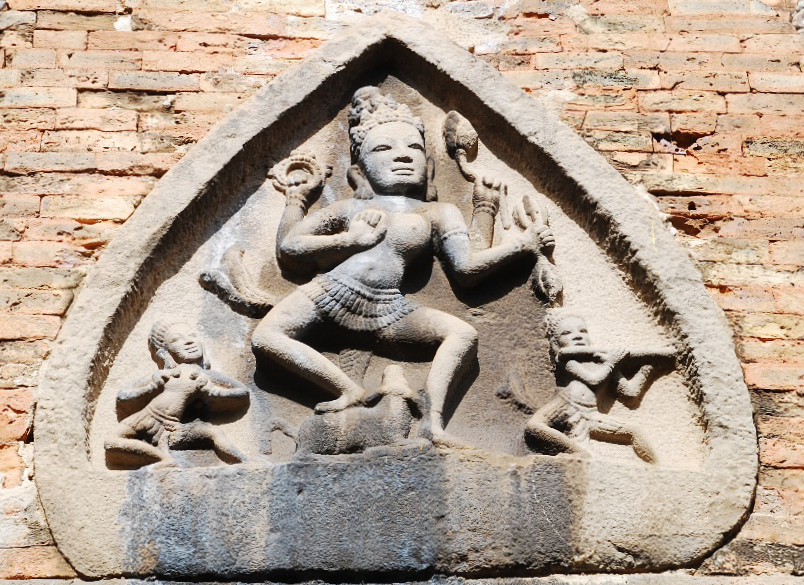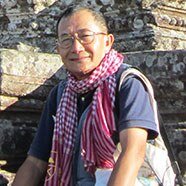Durga
sk दुर्गा Durga "invicible", "fortress-like", "beyond defeat" | sk दुर्गा महिषासुर मर्दिनी Durga Mahishasura Mardini "who defeats Mahishasura". | kh ព្រះម៉ែទុគា Preah Me Thuka, ព្រះនាងទុរគ្គា Preah Tureka, ចៅម៉ែទុគ៌ា Chao Methuka, ព្រះម៉ែទុគ៌ា Preah Maa Tukra, "Preah Maa Durga" ["Goddess Mother Durga"] | th เจ้าแม่ดูร์กา Cea mae Durka "Goddess Durga" | jv Loro Jonggrang "slender maiden"
Durga is a major Hindu goddess, worshipped as a principal avatar of mother goddess Mahadevi, associated with protection, strength, motherhood, destruction, and wars. She has different names, including Durgā, Bhadrakālī, Vijayā, Vaiṣṇavī, Kumudā, Caṇḍikā, Kṛṣṇā, Mādhavī, Kanyakā, Māyā, Nārāyaṇī, Īśānī, Śāradā and Ambikā.
In Shaktism (goddess-centric sect), she is Devi (the Goddess), primordial creator of the universe, and in the Bhagavata purana she is Vishnu's younger sister. In Indian representations - in particular at Aihole Temple - Mahishasura Mardini Durga has eight arms, carrying the weapons and attributes given to her by male deities: the trident (given by Shiva), the Chakra (Vishnu), the conch (Varuna), the Pasha an iron rod (Yama), the dart (Agni), the bow (Vayu), the quiver and arrows (Surya), the thuderbolt (Indra), the mace (Kubera), the rosary and a water pot (Brahma), the sword and shield (Kala), the battle axe (Vishwakarma), the lion (Himavan), a disc and a lotus, a bell, etc...She is standing in the Tribhanga pose (three bends), legs apart, left leg pressing down the buffalo demon.
Across Indonesian islands, Durga was the most common representation among ancient sculptures of female deities. Durga statues have been discovered at stone temples and archaeological sites in Vietnam, likely related to Champa or Cham dynasty era.
In Cambodian art, Durga, in particular in the Mahishasurmardini form, was revered since the oldest recorded times. An 1.65 meter-high statue was retrieved at what has been supposed to be the site of the main temple of King Ishanavarman of Chenla (r. c. 615–628 C.E.) in Ishanapura (Sambor Prei Kuk).
In modern Cambodia, the Indian community has started to give social resonance to the celebration of Durga Puja, the festival observed usually in September or October, from the sixth (Shashti) to the tenth day of the bright lunar fortnight in the Hindu lunar calendar month of Ashvin, concluding with Durga Visarjan (immersion of the idol).




